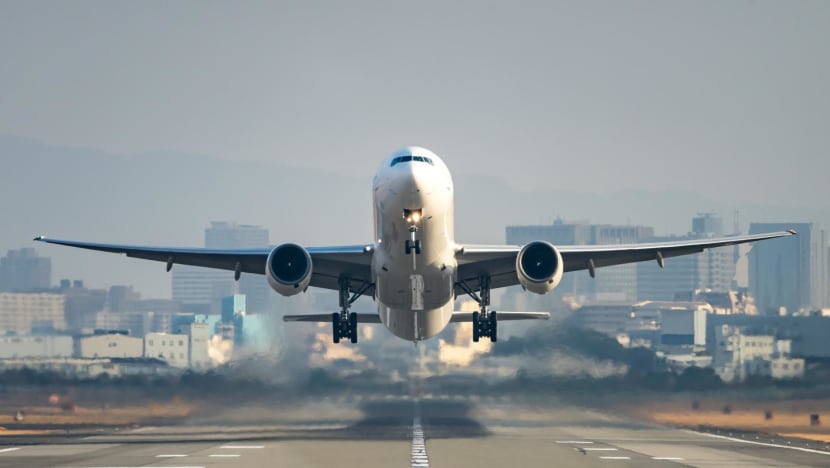Transforming the aviation and automotive industries through innovative digital solutions
Through alliances with Singapore Airlines and Jaguar Land Rover, Tata Communications is revolutionising customer experiences, boosting staff productivity and driving operational excellence.

Tata Communications' suite of solutions enhances the flying experience. Photos: Shutterstock, Tata Communications
As passengers board a flight, they look forward to settling comfortably in their seat, savouring inflight meals, safely reaching their destination and retrieving their luggage with minimal disruptions. This seamless travel experience relies on the smooth transmission of information throughout the journey.
Effectively managing this extensive data flow necessitates a solution that is secure and reliable, yet cost-efficient. A strategic partnership between Singapore Airlines (SIA) and Tata Communications has contributed to a smoother travel experience for passengers. Leveraging Tata Communications’ intelligent global cellular connectivity management platform called MOVE, critical flight, operational and passenger data are seamlessly exchanged on devices used by SIA pilots and crew members, leading to the development of highly efficient operational protocols.
ENHANCING COMMUNICATIONS FOR IMPROVED EFFICIENCY
With its network-independent approach, MOVE aims to provide transformational Internet of Things (IoT) connectivity solutions for businesses.
The platform comprises three key components: MOVE SIM Connect that extends global mobile connectivity to enterprise personnel; MOVE IoT Connect, intended for IoT-enhanced devices; and MOVE Mobile Network Enablement, which enables the integrated deployment of mobile virtual network operators.
Upon touchdown, MOVE ensures the swift transmission of up-to-date information to airport systems and ground crew. By equipping pilots with electronic flight bag applications – devices used for data storage and pre-flight calculations – and cabin crew with electronic passenger lists, updates can be made in real time, boosting efficiency.
In addition, pilots and crew can utilise MOVE to file flight plans, update inventories, organise passenger seating and schedule aircraft servicing.

“Our partnership with SIA centres on three pivotal areas,” said Mr Amitabh Sarkar, Tata Communications’ vice president and head of enterprise, Asia Pacific and Japan. “We aim to revitalise the customer experience across the airline, elevate employee productivity and enrich partner ecosystem interactions. We prioritise delivering optimised flight operations to pilots and crew, enabling them to deliver their best service to passengers.”
ELEVATING CUSTOMER SATISFACTION
In maintaining a sustained advantage in airline operations, addressing the diverse needs of multiple stakeholders within a complex ecosystem of people, processes and policies is key. Industry leaders like SIA often navigate these challenges through innovation, underscoring the importance of continual development.
For instance, the airline uses Tata Communications’ IZO SD-WAN (software-defined wide area network) to intelligently route customer calls to its global customer service centres. Tata Communications’ reliable toll and toll-free voice services further contribute to enriching the customer journey.

“IZO SD-WAN improves omnichannel traffic management and reduces downtime,” Mr Sarkar explained. “At SIA, it ensures rapid connections between passengers and call centre agents, allowing the airline to deliver quick responses.”
To optimise the service experience, calls are routed based on preferred language, skills, priority and other criteria, connecting customers to the most qualified agent at SIA’s customer service centres.
“Innovative market leaders require partners adept at offering solutions that enable scalability, flexibility and personalisation, resulting in improved returns on investment,” shared Mr Sarkar.
INCREASING STAFF PRODUCTIVITY
Deepening their long-standing association, Tata Communications and SIA announced a multi-year agreement last year to revamp the airline’s communications and collaboration tools, to boost employee productivity and improve user experience.
This initiative, implemented through Tata Communications’ GlobalRapide platform, enables users to connect and collaborate seamlessly, regardless of their location around the world.
The fully managed, high-availability solution adheres to essential regulatory compliance standards and offers productivity-enhancing features such as detailed call accounting for precise cost allocation and third-party carrier management.
The outcome is a smooth collaboration experience for calling, messaging and creating voice mail or meetings on both laptops and smartphones, with an anticipated reduction in provider setup costs.
WEAVING A DIGITAL FABRIC TO SUPPORT TRANSFORMATION

According to Mr Sarkar, digital transformation should address three crucial elements: Cost management, revenue generation and customer satisfaction, all aimed at establishing a sustainable competitive edge.
Tata Communications teamed up with Jaguar Land Rover (JLR) to drive the ongoing digital evolution at the British automotive manufacturer. This journey is fuelled by what Tata Communications refers to as a ‘digital fabric’, comprising agile infrastructure, platforms, tools and expertise, and managed services. These solutions seamlessly integrate JLR’s systems, workforce, suppliers, stakeholders and customers across the globe.
“This digital fabric will help future-proof JLR’s digital transformation and set new standards such as implementing industry 4.0 principles and applying advanced analytics,” said Mr Sarkar.
Through the partnership, Tata Communications will connect 128 JLR global sites with cloud-first, software-defined network capability. The exercise aims to propel artificial intelligence (AI) adoption to facilitate predictive risk management and minimise manufacturing disruptions. Moreover, deploying a digital architecture will enable real-time data diagnosis in production lines, thus enhancing vehicle build quality.
To link JLR’s worldwide sites, including plants, warehouses, sales centres and data centres, Tata Communications relies on its cloud-first SD-WAN technology to boost supply chain efficiency and security.
“Moving to SD-WAN means we can use AI-powered automation to predict vulnerabilities and proactively intervene, as well as perform more effectively on a global scale across our network,” said JLR’s group chief digital and information officer Tony Battle.
According to Mr Sarkar, the partnership is expected to deliver substantial cost savings and related business benefits. The implementation of JLR’s network transformation programme, slated for completion next year, will notably reduce the time needed to upgrade manufacturing processes, strengthen operational resilience and bolster agility to meet production demands.
Said Mr Battle: “JLR is in an exciting phase in its digital transformation journey. Leveraging Tata Communications’ technologies and capabilities will leapfrog our networks into the future, ultimately enhancing our ability to deliver remarkable driving experiences.”
Learn more about partnering with Tata Communications to drive efficiency for an improved customer experience.















